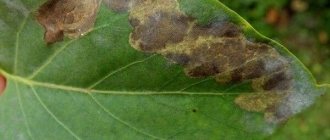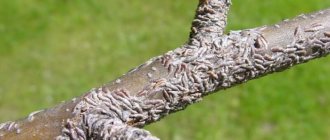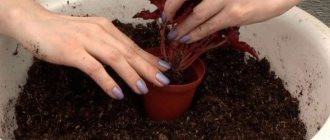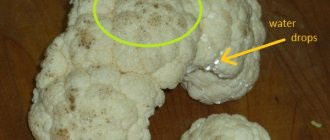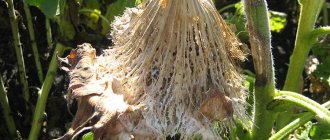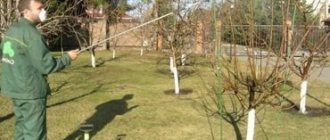Asters are loved for their unpretentiousness and beautiful flowering. But these flowers also have disadvantages: the plants attract pests and have weak immunity to diseases. Can I handle this?
The most dangerous diseases for asters are fusarium, jaundice, black leg and gray rot. And among insects, aphids cause the greatest harm to beautiful asters. But asters can be protected from all these misfortunes. It is enough to recognize the problem in time and choose a way to solve it. And some troubles with asters can be completely avoided if you take preventive protective measures.
Prevention
In order to avoid having to treat asters for diseases, it is necessary to devote enough time to preventive measures.
- Prevention involves the use of high-quality and healthy planting material.
- Preference should be given to varieties resistant to viral diseases.
- In addition, it is necessary to regularly monitor flowers and fight against those insects that are carriers of diseases.
- At the slightest sign of disease, infected plants must be immediately eliminated to prevent further spread of the disease.
Jaundice, as well as fusarium, pose a great danger to annual asters.
The aster's leaves are turning black
Black leaves indicate advanced stages of the disease, putrefactive processes or bacterial damage. It is not a fact that the sick aster will be saved, but the rest must be protected!
— Due to bacterial burn, asters seem to completely burn out, starting with young leaves and shoots;
— Root cancer leaves black necrotic lesions, tumors and ulcers;
— Black plaque spreads over the leaves, which are covered with sooty fungus. For prevention, treat with insecticides, because it is spread by insects.
Fusarium
Fusarium is considered the most dangerous disease affecting asters. The causative agent of this disease is a fungus called Fusarium. These are spores with thick walls. They can be stored in the ground for a long period of time. Asters become infected with this disease through the ground.
Damage to aster by fusarium
Initially, the spores fall on the root system and gradually rise up the plant. Their movement occurs through the vascular system, resulting in clogging. Most often, fusarium is noticeable at the stage of formation of peduncles and their flowering, and gradual wilting begins.
The risk of young plants becoming infected with this disease is not high. Infection occurs only if all conditions are created for the active development of fusarium.
Initially, the disease is reflected on the leaves. They begin to turn yellow, then turn brown, curl and fall off. Oblong brown spots form on the stems. On the root collar, as well as in areas above, longitudinal stripes of dark color appear. In some cases, cracks appear on the stems. The flowers take on a gloomy appearance, and then stop developing and wither.
In asters that are infected with fusarium, pink mycelium forms in the lower part of the stem. They are shaped like pads. Signs of damage to aster stems, such as wilting leaves and dark stripes, indicate fusarium. It is these symptoms that make it possible to accurately identify the disease and not confuse it with other aster diseases. The formation of a pink coating, that is, fungal spores, occurs on those asters that begin to die. This also occurs at elevated air temperatures and high humidity. The disease usually affects annual asters. Other plants are not at risk.
The circulation of seed material is of great importance in the field of agricultural technology. The most active spread of this disease is observed during the period when the soil warms up to a temperature of 12–32 degrees, as well as at high humidity. The most optimal temperature for mushroom propagation is 20 – 27 degrees. If the temperature is higher or lower, fusarium will no longer develop. Until there are favorable conditions for the development of fusarium, all signs of the disease will not be noticeable. Experts say that some varieties of American Beauty are most susceptible to the disease.
Fighting methods:
- constant turnover of seed material;
- re-planting at the originally chosen location no earlier than after 4 years;
- treatment of seed material with drugs that have a disinfecting effect;
- treating the soil with limestone to reduce the acidity level;
- steaming the soil before sowing asters; disinfection;
- regular spraying with a 0.5% solution of honey oxychloride;
- timely destruction of infected asters in order to prevent further spread of the disease;
- treating the area of soil where the infected plant grew with quicklime.
Photo of aster flower
Causes
Diseases are a common occurrence among asters. As a rule, crops are affected by three types of diseases: viral, bacterial and fungal.
Viral ones are the most dangerous because there is often no treatment for them at all.
These types of diseases are transferred from flower to flower by pests, and they may well fly in from neighboring areas. Another reason for the appearance is contaminated seed material. That is, the seeds that the gardener bought are already initially infected with viruses. In addition, there are situations when plants have already died once after a disease, and the land was not properly cultivated. Then, with a high degree of probability, the virus attacks the crop again.
Bacterial diseases are not so common, but they are also difficult to treat. Bacteria can get into asters in several cases:
- through infected instruments;
- in the absence of treatment and disinfection of the plant after pruning, as well as if the branches or stem are damaged.
The most common type of disease is fungal, and this applies not only to asters, but to all crops on the site as a whole.
Let's look at a number of reasons why such diseases appear.
- Failure to comply with the watering regime. Every gardener knows that any plant needs to provide its own watering regime. Astra needs a lot of water, but this does not mean that it needs to be filled. If there is excess water, this will be an excellent “starting point” for the development of fungus.
- Increased air humidity. The fungus loves moisture and multiplies fastest in rainy summers.
- Too thick fit. When there are too many plants in one area, they begin to “compete” for nutrients in the soil. In addition, certain parts of the crop will not have enough sun, as well as oxygen, since air circulation will be disrupted. In such conditions, the appearance of fungus is very predictable.
It is worth noting that the above reasons do not always necessarily cause the appearance of fungus.
However, we must remember that spores most successfully attack weak plants with poor immunity.
If you take poor care of your pets, water them incorrectly, and don’t know what and how to feed them, diseases in most cases cannot be avoided.
Blackleg
There is another fungal disease that appears in asters - this is the black leg. At the first stage of development of the disease, seedlings begin to turn black. A little later, the process of rotting of the root neck and its base begins. As a result, the stem of the plant becomes thin, which leads to the plant bending and, accordingly, death. This fungus can withstand severe frosts. Thus, it overwinters in the ground. It actively spreads in acidic soils.
Fighting methods:
- immediate removal of infected asters;
- early picking of seedlings;
- soil disinfection using a 1% manganese solution at a rate of 100 grams per ten liters of water;
- carrying out disinfection using a solution prepared on the basis of copper sulfate or lime.
This solution must be used to treat containers where seeds are sown, as well as greenhouses.
Experienced gardeners use an infusion prepared from onion scales to combat fungus. This infusion should be watered several times a week.
Photo of aster
Bacterial spotting
When you find yellow spots on the leaves of an aster, this indicates that the flowers have been affected by bacterial spotting. Initially, the change in color of the leaf is visible from the inside. They look like autumn yellowing (may be red in color). Also, they begin to dry out and fall off quickly. Unfortunately, such signs can also occur in other diseases. To be 100% sure, you need to conduct an analysis in the laboratory.
Bacterial spot spreads rapidly, especially during rains or heavy watering. A humid environment is an ideal place for breeding. To avoid such a disease, only healthy plants are selected for propagation. When caring for flowers, you should follow the rules of hygiene.
Methods to combat bacterial spotting:
- Flowers must be kept dry.
- As a preventative measure, the flower is treated with copper sulfate. Spray once every 3 weeks.
- Spray both flowers and soil.
- If the disease has affected the flowers, they should be sprayed with the same preparations as for brown spot. Leave about 10-12 days between sprayings.
Rust
Rust affects various types of aster, as well as pine trees. Pustules form where the leaves meet the stem. These are kind of swellings. This phenomenon occurs in early summer. The disease gradually progresses, and the leaves begin to wither and dry out. As a result of winter fruiting, the formation of flat orange pads is observed. They are covered with epidermis, and brown spores are located inside. These types of spores begin their development with the onset of spring warmth.
In summer, or rather in mid-summer, white bubbles grow on pine needles. Their internal cavity is completely filled with light orange spores. These spores spread very quickly and easily under the influence of the wind. It is important to note that they can fly over long distances, as a result of which they land on the surface of leaves and develop further.
Fighting methods:
- preventive treatment of plants using a solution prepared on the basis of crushed sulfur and lime. The proportion should be one to one. The treatment procedure is carried out when the air temperature reaches 18 - 20 degrees;
- treating asters with a solution of Bordeaux mixture once every ten days;
- if asters are planted not far from pines or other conifers, then the distance from the flowers to the conifers should be no less than 300 meters.
Photo of aster
What to do, how to get rid of it
Diseases and pests of fuchsia
If an aster's leaves curl or turn yellow, you need to know what to do in advance.
Must be taken into account! It is recommended, if possible, to eliminate bad soil, as it may contain viruses and bacteria, under the influence of which the flowers will become sick.
Replanting aster and diving help to solve the problem well. If damaged plants are identified, they need to be removed (isolated) from healthy ones. It is recommended to water with disinfectants (potassium permanganate solution).
Jaundice
Asters are affected by the jaundice virus. Its main carriers are aphids and cicadas. Initially, the veins on the leaves of the affected plants begin to lighten, after which complete chlorosis of the leaves occurs. Infected asters are significantly delayed in development, and the bushes themselves begin to grow larger. The buds become green and do not develop further, that is, they do not bloom. This virus has a detrimental effect not only on asters, but also on other types of flowers, such as zinnia, marigolds, and so on.
Fighting methods:
- the main vectors, that is, aphids and cicadas, should be actively combated;
- burning of infected plants;
- regular treatment of asters with solutions of drugs such as actelic, inta-vir, pyrethrum. You need to add a little liquid soap to the solutions. This will allow the product not to flow onto the ground immediately after treatment, but will remain on the surface of the stems and leaves.
Some gardeners use a special decoction and infusion based on dry yarrow leaves to combat aphids and cicadas. It is important that the product infuses for at least 32 hours.
Photo of aster flower
Pests
Many insects not only harm plants themselves, but also carry dangerous diseases. The more parasites there are, the faster you need to start fighting them.
Aphid
The most popular pest of asters. Insects feed on the sap of the plant. Gradually, the shoots curl and weaken, the petals become discolored and deformed. In dry, hot summers, aphids reproduce especially quickly. Ants that feed on pest secretions also cause great harm.
Related article:
How to decorate a terrace in a country house or country house: 6 best ornamental plants
To combat insects, you can use folk remedies, for example, infusion of tomato tops. To prepare it, 4 kg of greens are poured into a bucket of water and boiled for half an hour. After filtering, 3 liters of working broth are diluted with 10 liters of water, 40 g of grated laundry soap are added and the crops are sprayed. Inta-Vir (1 tablet per 10 liters of liquid) is suitable.
Spider mite
It reproduces on asters in dry summers. The first signs of the pest are a thin brownish web on the back of the leaf. An arachnid insect of a milky or reddish color, sucking the juice from plants, causes the death of flowers.
The fight against ticks is carried out with a solution of Karbofos or the drug Skor. You can pollinate the foliage with a mixture of sulfur and lime in a 1:1 ratio. Folk remedies include spraying with infusions of garlic, onion peels, dandelion, and potato tops 2-3 times every 5 days.
Useful information: How to destroy spider mites
Thrips
Common pests 1-2 mm long. Insects have sucking mouthparts and strong paws with teeth. The body is painted black or gray. Thrips suck the juice from plants, leading to their death. The stems become bent, yellowish spots appear on the leaves, and the buds become twisted and deformed.
Related article:
Veronica perennial plant
A solution of Fitoverm or other insecticides helps against thrips. The preparations are diluted according to the instructions and sprayed on all parts of the aster.
Meadow bug
The insect belongs to the family of horse flies. Its body is up to 7 mm long, dark brown or yellowish. The surface is covered with dark spots. The insect flies from one flower to another, sucking the juices. White spots appear on plants, bushes become deformed.
The fight against the meadow bug begins with treating asters with a soap solution. Then, after 1-2 days, spray with any insecticide, diluting it according to the instructions.
Scoop Gamma
A butterfly up to 5 cm long with a gray or purple color with silver spots. The insect has a brown border on its hind wings. The butterflies themselves are harmless: they feed on pollen. The damage is caused by caterpillars that eat the green mass.
Related article:
Osmanthus plant: photos, types, cultivation, planting and care in open ground
Insects are collected by hand. After a few days, the asters are treated with insecticides.
Sunflower moth
A small butterfly with gray wings covered with black spots and veins. As in the previous case, damage to the crop is caused by caterpillars that eat the green mass. It's quite difficult to fight them. Pests are collected by hand, and asters are treated with tobacco infusion and insecticide solutions.
Septoriz
Another type of disease affecting asters is septoria. It is also commonly called brown leaf spot. This disease has a very negative effect on the appearance of the plant. During the period of bud formation, characteristic spots appear on the surface of the leaves below, having a light brown color. These spots can have very different shapes. These spots gradually increase in area and spread to other still healthy leaves. This affects the entire bush. During the flowering process, the leaves dry out and die.
As a rule, the risk of infection with septoria increases when the weather is warm and humid. The weakest plants that are not properly cared for are affected first. In addition to this, the development of brown spot is promoted by excessive bush density and excessive treatment with nitrogen fertilizers. The disease does not live in the soil itself, but on the remains of infected plants.
At the first signs of septoria, it is necessary to treat with special preparations that contain copper. It could be a Bordeaux mixture.
Photo of aster
Gray rot
During the period of infection with gray rot, the plant begins to wither and lose its beautiful appearance. Almost the entire plant suffers from the disease: stems, leaves, flowers. They appear brownish. Young asters are most susceptible to the disease.
Those parts of the flowers that are affected begin to rot. A fluffy gray coating appears in these places. The disease progresses rapidly in damp and cold weather.
If measures are not taken in a timely manner, the flowers will disappear fairly quickly. You can fight gray mold with the same drugs used during the treatment of brown spot.
White coating on aster leaves
White fungal spores really resemble a soft velvety coating on the leaves. Sometimes from a distance it can be confused with a thin whitish web left by pests.
— A whitish coating on warm, humid days is powdery mildew. The ubiquitous fungus is found on all garden plants, but responds well to treatment;
— A thin whitish web, under which the leaves gradually fade and dry, is left by a spider mite;
— Late blight spots can sometimes become covered with a coating that resembles a cobweb;
— A white coating on top of dark spots is caused by white rot, which loves humidity, cold weather and thickened plantings;
— Aphids leave a sticky, shiny coating on top of discolored spots.
Brief characteristics of the plant
Since ancient times, the aster has been considered a symbol of beauty, modesty, and elegance. Today, almost no one is interested in the origins of this beauty, but everyone admires her amazing appearance.
Thanks to the work of breeders, such a variety of aster varieties have been created that even experienced gardeners begin to get confused about them. This ornamental plant has many shapes and colors. In garden plots you can find yellow, white, red, blue, pink, and purple specimens.
Aster is a low-growing flower. They decorate terraces with it, plant it along garden paths and on balconies. The plant is not fussy to care for and grow, but is prone to various diseases.
Viral infections
There are 3 most common ailments that can lead to the death of an aster.
Spectacular hawthorn - an unpretentious large-fruited healer in the garden
Jaundice
A viral disease in which the leaves first become very light, and then prematurely turn yellow and fall off. This disease provokes weakening of the plant, slows down its development, and causes abundant branching. In an aster affected by jaundice, the process of proper formation of inflorescences is disrupted; the petals are green. Flowers that show signs of being severely affected by the disease are removed from the flowerbed along with a lump of earth around them. Sick plants cannot be used for compost - they are burned. For treatment, special drugs are used (Inta-Vir or Actellik). Plants are treated with these products twice, with at least 1 week between treatments.
Bacterial spot
- To get rid of this disease, plants are sprayed with a solution of copper sulfate. This is done every 3 weeks 3-4 times, depending on the condition of the asters. The soil must be treated by watering it with a strong solution of manganese.
- Another method is spraying with Bordeaux mixture or copper oxychloride several times with an interval of 7 days.

